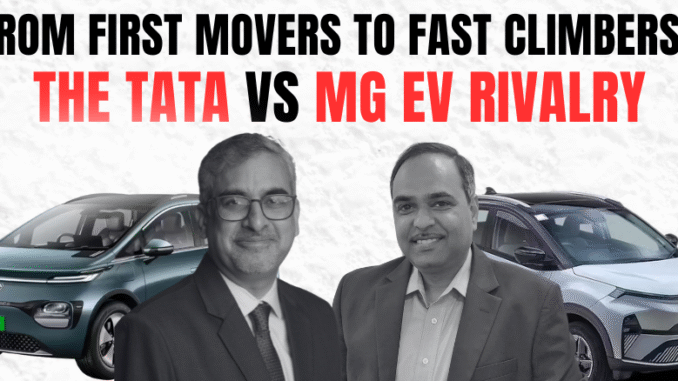
What happens when the steady hand of an industry pioneer is challenged by the turbocharged ambition of a rising disruptor? September 2025 put this question to the test as Tata Passenger Electric Mobility—India’s original EV powerhouse—went head-to-head with JSW MG Motor India, the sector’s most aggressive fast climber. In a month marked by swings as dramatic as the technologies themselves, each brand played to its strengths—one betting on scale and trust, the other on bold new launches and rapid gains—offering a preview of how India’s electric car revolution will ultimately be won.
The Data Behind the Drama
While Tata Passenger Electric Mobility Ltd remained the segment’s pillar, registering 6,348 units in September (down from 7,460 in August), the real surprise came from JSW MG Motor India Pvt Ltd. MG climbed to 5,093 units in August, before retreating to 3,991 units in September—a dramatic month-on-month decline of nearly 22% in the face of changing demand and tighter competition.
Tata’s resilience reasserted its leadership, despite cooling demand, as it consolidated gains from a robust year. Meanwhile, MG’s rapid climb and September slowdown showcased the power—and risks—of aggressive launches and expanded urban outreach, proving the brand is more than a second-place disruptor, but also highlighting the challenge of sustaining momentum beyond headline spikes.
Strategic Showdown: Two Distinct Philosophies
Tata Motors has long played the role of the methodical market-builder: investing early in domestic production, building a nationwide charging network, and cultivating customer trust. Tata’s consistent product rollout—from the affordable Tiago EV to premium offerings like the Nexon EV—and steady updates keep its brand relevant for diverse buyers, setting benchmarks for reliability and scale.
MG’s strategy, by contrast, is that of the fast climber. By introducing variants like the ZS EV and new luxury models (Cyberster, M9 Presidential Limousine), and leveraging aggressive marketing, MG has stolen market share with bold new launches. The August surge highlighted MG’s ability to ride seasonal demand and media hype, while the September retreat exposes the difficulty of sustaining explosive growth in a maturing market.
The September Slowdown: Lessons in Market Dynamics
MG’s dramatic swing between August and September reveals the real risk of blitzscaling in an Indian EV market where infrastructure and consumer habits are still evolving. Meanwhile, Tata’s steadiness continues to underscore the value of long-term investment, established service networks, and data-driven product innovation.
Both companies have catalyzed EV awareness in India, but September’s reversal demonstrates that sustained leadership demands more than rapid sales—it requires operational discipline, customer support, and ongoing adaptability.
The Road Ahead
As the sector matures, the Tata vs MG rivalry frames a bigger debate: Can new entrants maintain momentum long enough to displace an established leader? Or will steady, incremental innovation ultimately outlast every ambitious surge?
In India’s electrifying mobility race, September 2025 may be remembered as the month the fast climber hit its first major turbulence—and the patient builder reaffirmed that resilience is the ultimate competitive advantage.



